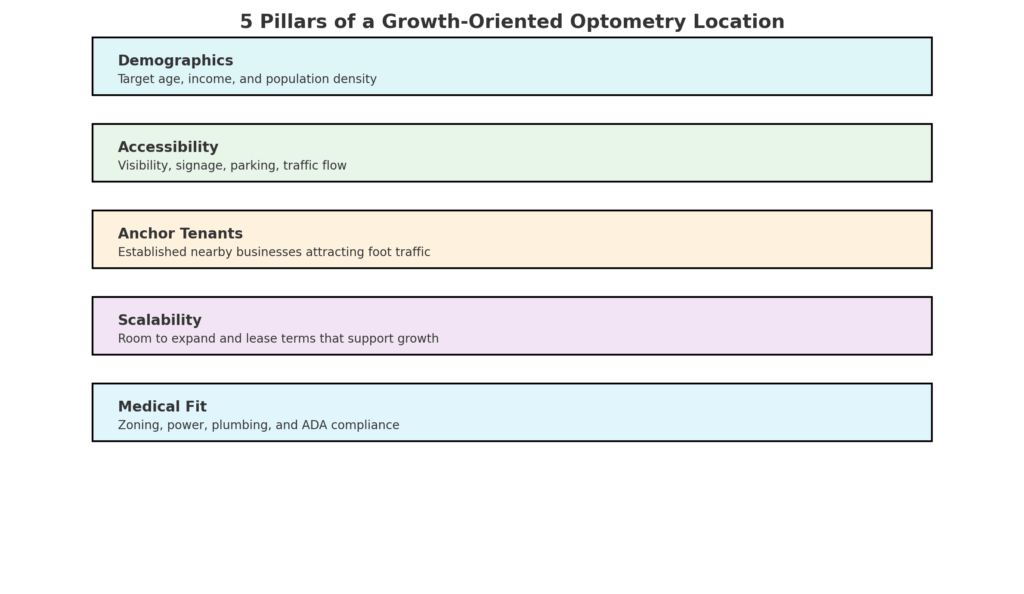Choosing the right location for your optometry clinic isn’t just about square footage or getting a
good deal on rent. It’s about setting yourself up for sustainable growth, brand visibility, and
operational success for the long haul. In fact, location is one of the most influential factors in
whether your practice thrives—or struggles to get off the ground.
Here’s how to think strategically when selecting your site.
- Start With Demographics and Drive-Time Analysis
You can’t serve everyone, and you shouldn’t try to. Use tools like Site To Do Business (STDB)
or ESRI to break down:
● Average household income
● Population density
● Age brackets
● Insurance usage trends
You’re not just looking for volume—you’re looking for alignment. If you’re offering pediatric
optometry or vision therapy, the age of nearby residents matters. If you sell boutique frames, so
does household income.
Pro tip: A 10-minute drive-time map tells you more about patient potential than a simple zip
code.
- Think Like a Patient
Would you drive to your own clinic?
Look for sites that:
● Are easy to access from major roads
● Have visible signage opportunities (preferably street-facing)
● Offer ample, convenient parking
● Don’t require complicated elevators or hidden entrances
If the first experience a patient has is frustration finding your door, they’re less likely to
return—or even show up the first time.
- Don’t Underestimate Anchor Tenants
A strip center next to a gym, grocery store, or Starbucks? That’s foot traffic gold.
These tenants create steady, reliable visibility and attract exactly the kind of residents who tend
to become loyal, returning patients. It also signals to lenders and other providers that you’re in a
growing area.
Avoid retail centers that are 30–50% vacant—if the place feels like it’s fading, patients will feel it
too. - Plan for Phase Two—Not Just Day One
The goal isn’t just to open. It’s to stay open, scale, and eventually grow. That means evaluating:
● Expansion options (adjacent suites, flexible floor plans)
● Long-term rent escalations
● Demographic trends (e.g., a nearby high school now = a growing family population in 5
years)
● Infrastructure (Can the suite handle your equipment needs? What’s the HVAC
capacity?)
Even if you’re starting with one exam lane, your site should have the potential to support three.
- Work With a Broker Who Knows Medical
This isn’t the same as opening a smoothie shop or boutique.
You need someone who knows:
● Medical use restrictions
● ADA compliance and code regulations
● What kind of power and plumbing optometry equipment requires
● How to negotiate TI allowances to reduce your upfront costs
The right real estate partner will save you time, stress, and a lot of money down the road.
Final Thoughts
The best optometry practices are built on more than just clinical excellence—they’re built on
strong, strategic foundations. Choosing your location isn’t a decision to rush. It’s a business
decision that will affect everything from your monthly cash flow to your patient experience.
Think bigger than the lease rate. Think about where your brand can grow, thrive, and be seen.


